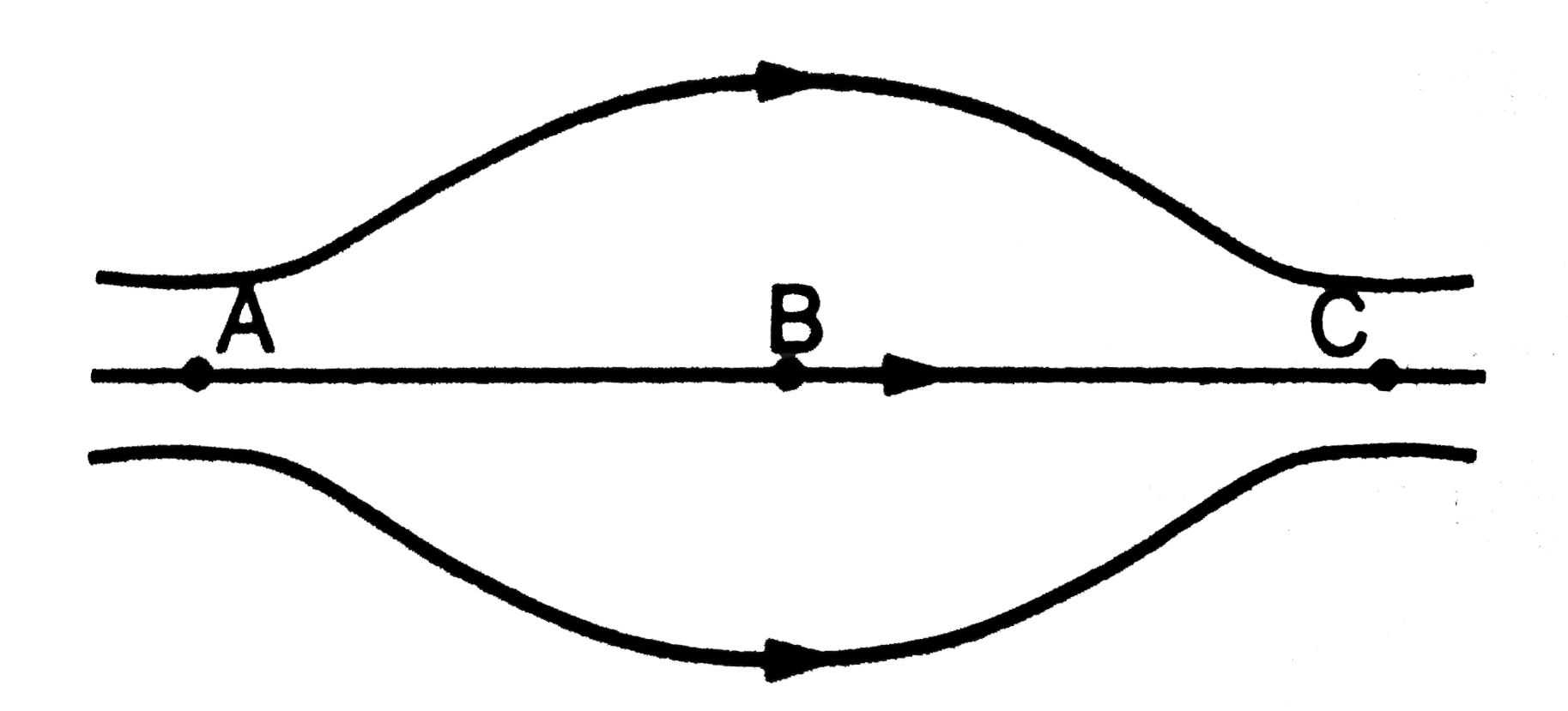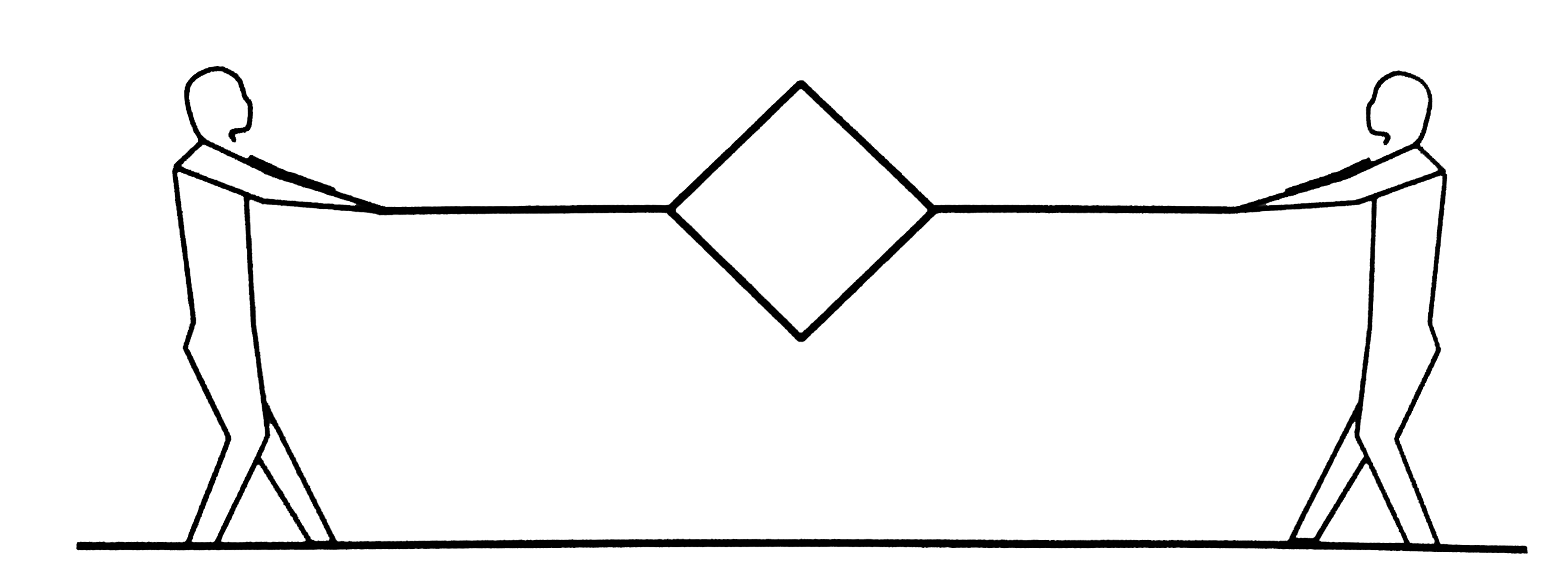Two particles A and B having charges 8.0×10−6C and −2.0×10−6C respectively are held fixed with a. separation of 20cm. Where should a third charged. particle be placed so that it dose not experience a net electric force?.Solution in Gujrati
20 cm
40 cm
60 cm
45 cm
The correct Answer is:A
As the net electric force on C should be equal to
zero, the force due to A and B must be opposite in
direction. Hence, the particle should be placed on the
line AB. As A and B have charges of opposite signs, C
cannot be between A and B. Also, A has larger
magnitude of charge then B. Hence, C should be placed closer to B then A. The situation is shown in figure

Suppose BC=xandthechar≥onCisQ.
The force due to A=(8.0×10−6C)Q4πε0(20cm+x)2
The force due to B=(2.0×10−6C)Q4πε0x2
They are oppositely directed and to have a zero
resultant, they should be equal in magnitude. Thus,
8(20cm+x)2=2x2
or 20cm+xx=2, giving x = 20cm.
Topper's Solved these Questions
- BOOK - HC VERMACHAPTER - ELECTRIC FIELD AND POTENTIALEXERCISE - Short Answer14videos
ELECTRIC FIELD AND POTENTIAL
- BOOK - HC VERMACHAPTER - ELECTRIC FIELD AND POTENTIALEXERCISE - Objective 19videos
ELECTRIC FIELD AND POTENTIAL
- BOOK - HC VERMACHAPTER - ELECTRIC FIELD AND POTENTIALEXERCISE - Exercises75videos
ELECTRIC FIELD AND POTENTIAL
- BOOK - HC VERMACHAPTER - ELECTRIC CURRENT THROUGH GASESEXERCISE - Exercises23videos
ELECTRIC CURRENT THROUGH GASES
- BOOK - HC VERMACHAPTER - ELECTROMAGNETIC INDUCTIONEXERCISE - EXERCISE9videos
ELECTROMAGNETIC INDUCTION
Similar Questions
The charge on a proton is +1.6X10(−19)C and that on an electron is −1.6X10(−19)C. Does it mean that the electron has a charge 3.2X10(−19)C less than the charge of a proton?
05:21View SolutionFigure shows some of the electric field lines correspoinding to an electric field. The figure suggests that
 04:38View Solution
04:38View SolutionFind the dimensional formula of ε0 .
05:43View SolutionA discharge tube contains helium at a low pressure. A large potential difference is applied across the tube. Consider a helium atom that has just been ionized due to the detachment of an atomic electron. Find the ratio of the distance travelled by the free electron to that by the positive ion in a short time dt after the ionization.
04:40View SolutionShown a metallic square frame of edga a in a vertical plane. A uniform magnetic field B exists in the space in a directon perpendicular to the plane of the figure. Two boys pull the opposite corners of the square ot deform it into a rhombus. They start pulling the corners t t=0 and sisplace the corners at a uniform speed u. (a) find the induced emf in the frame at the instant when the angles at these corners reduce to 60∘. (b) find the induced current in the frame at this instatnt if the total resistance of the frame is R. (c) Find the total charge which flows through a side of the frame by the time the square is deformed into a straight line.
 04:33View Solution
04:33View SolutionTwo particles A and B having charges 8.0×10−6C and −2.0×10−6C respectively are held fixed with a. separation of 20cm. Where should a third charged. particle be placed so that it dose not experience a net electric force?.
09:14View SolutionTwo chargea 2.0xx10^(-6) C are placed at a separation of 10 cm. where should a third charge be placed such that it experiences no net force due to these charges.
07:48View SolutionSuppose the second charge in the previous problem is −1.0×10−6C. Locate the position where a third charge will not experience a net force.
07:06View SolutionTwo particles A and B having charges of +2.00×10−6C and of −4.00×10−6 respectively are held fixed at a separation of 20.0 cm . Locate the point(s) on the line AB where (a) the electric field is zero (b) the electric potential is zero.
04:28View SolutionTwo particles A and B having charges of 4xx10^(-6)C and -8xx10^(-6) C respectively, are held fixed at a separation of 60 cm. Locate the point (s) on the line AB where the electric potential is zero.
05:30View Solutionसंलग्न चित्रों (a व b) में समान रूप से आवेशित तीन कण A, B व C दिखाए गए है। कण A, द्वारा कण B पर आरोपित वैद्युत बल 2.0×10−6 न्यूटन है। प्रत्येक चित्र में ज्ञात कीजिए: (i) कण C द्वारा कण B पर आरोपित वैद्युत बल तथा (ii) कण B पर नैट बल।
 05:39View Solution
05:39View SolutionTwo-particles A and B having charges 8×10−6Cand−2×10−6C respectively are held fixed with a separation of 20 cm. Where should a third charged particle C be placed so that it does not experience a net electric force?
05:14View Solutionदो स्थिर कणो A तथा B के आवेश क्रमशः 8×10−6 कूलॉम तथा −2×10−6 कूलॉम है, इनके बीच की दूरी 20 सेमी है। तीसरा आवेशित कण कहाँ रखा जाए कि वह कोई बल अनुभव न करे?
 05:34View Solution
05:34View SolutionTwo particles A and B having charges 8.0×10−6C and −2.0×10(−6)C respectively are held fixed with a. separtion of 20cm. Where should a thired charged. particle be placed so that it dose not experience a net electric force?.
04:52View SolutionTwo chargea 2.0×10−6C and 1.0×10−6C are placed at a separation of 10 cm. where should a third charge be placed such that it experiences no net force due to these charges.
05:56View SolutionSuppose the second charge in the previous problem is −1.0×10−6C. Locate the position where a third charge will not experience a net force.
04:29View Solution

